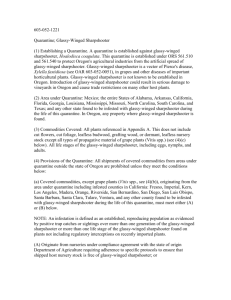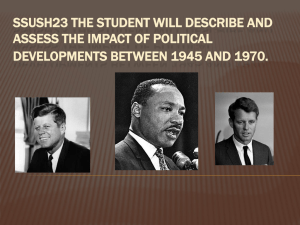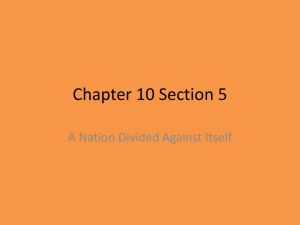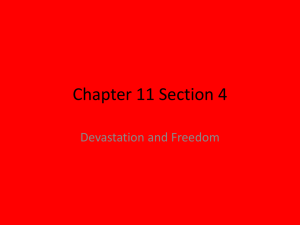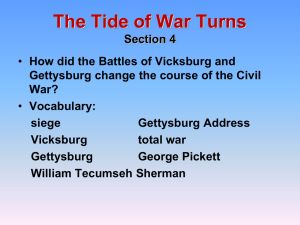The Texas Sharpshooter`s Fallacy
advertisement
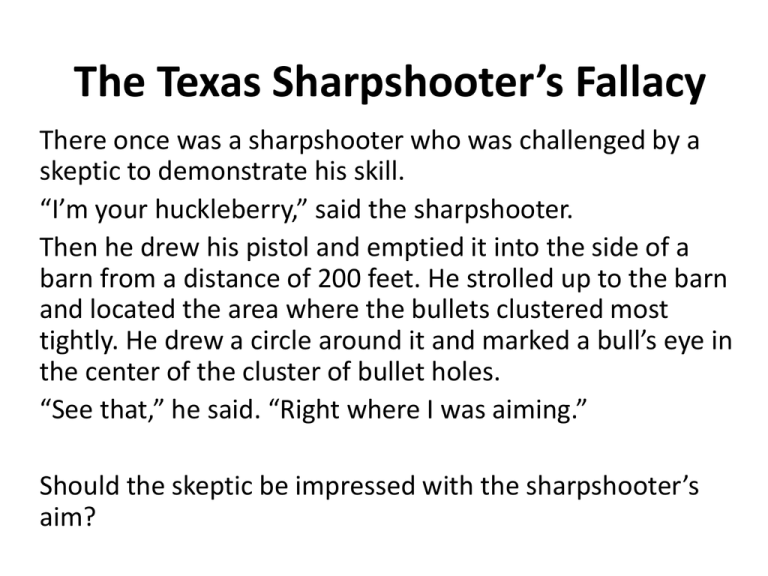
The Texas Sharpshooter’s Fallacy There once was a sharpshooter who was challenged by a skeptic to demonstrate his skill. “I’m your huckleberry,” said the sharpshooter. Then he drew his pistol and emptied it into the side of a barn from a distance of 200 feet. He strolled up to the barn and located the area where the bullets clustered most tightly. He drew a circle around it and marked a bull’s eye in the center of the cluster of bullet holes. “See that,” he said. “Right where I was aiming.” Should the skeptic be impressed with the sharpshooter’s aim? What Are the Chances? • Abraham Lincoln and John F. Kennedy were both presidents of the United States • They were elected 100 years apart. • Both were assassinated • Lincoln had a secretary named Kennedy • Kennedy had a secretary named Lincoln. What Are the Chances? • Both were shot and killed by assassins who were known by three names with 15 letters. • They were both killed on a Friday while sitting next to their wives. • Lincoln was killed in the Ford Theater • Kennedy was killed in a Lincoln made by Ford. • Both men were succeeded by a man named Johnson – Andrew for Lincoln and Lyndon for Kennedy. Andrew Johnson was born in 1808. Lyndon Johnson was born in 1908. What Are the Chances? • Kennedy was Catholic. Lincoln was born Baptist. • Kennedy was killed with a rifle, Lincoln with a pistol. • Kennedy was shot in Texas, Lincoln in Washington D.C. • Kennedy had lustrous auburn hair, while Lincoln wore a stove pipe hat. • The more we look, the more of such differences we would find, but when you draw the bull’s-eye around the similarities – whoa. The Texas Sharpshooter’s Fallacy • The Texas Sharpshooter’s fallacy concerns the tendency for people to attach undue significance to artifacts of randomness such as clustering, streaks, and coincidences. • “This can’t just be random. I mean, what are the chances?” Asking this question under many circumstances amounts to using the same data to test your hypothesis that you used to generate the hypothesis. What Are the Chances? • If you mean, “how likely would it be to be dealt a hand with neither any matched cards, nor a straight, nor a flush?” then the chance is about 1 in 2. • If you mean the chance of getting this particular hand, then the probability is 1 in about 2.6 million. The Texas Sharpshooter’s Fallacy • “There must be something serious at work here. I mean, what are the chances!!?” • Often this sort of astonishment is as foolish as picking up your cards at the poker table after being dealt every hand and exclaiming, “My gosh! There is only a 1 in 2.6 million chance that I would get this hand!” The Texas Sharpshooter’s Fallacy • The Sharpshooter’s Fallacy is at work when are astonished by the occurrence of extremely low probability events of this sort. • If you are being dealt 5 cards, there is a 100% chance that one of these extremely unlikely 1 in 2.6 million events will occur. • Like the Texas Sharpshooter, someone announces that a target has been hit at which no one previously knew we were even aiming. The Texas Sharpshooter’s Fallacy • One of the reasons scientists form a hypothesis and then try to disprove it with new research is to avoid the Texas Sharpshooter Fallacy. Epidemiologists are especially wary of it as they study the factors which lead to the spread of disease. • If you look at a map of the United States with dots assigned to where cancer rates are highest, you will notice areas of clumping. It looks like you have a pretty good indication of where the groundwater must be poisoned, or high-voltage power lines are bombarding people with damaging energy fields, or where cell phone towers are frying people’s organs, or where nuclear bombs must have been tested. • A map like that is a lot like the side of the sharpshooter’s barn, and presuming there must be a cause for cancer clusters is the same as drawing bull’s-eyes around them. The Sharpshooter’s Fallacy The fallacy is characterized by a lack of specific hypothesis prior to the gathering of data, or the formulation of a hypothesis only after data has already been gathered and examined (a practice also known as “Data Snooping”). What we used to say… “What are the chances of THAT?!!” “Whoa!” “Oh, my gosh! That just CAN’T be a coincidence.” What we will (I hope) say from now on… “That seems interesting, but we should collect new data. To think we can confirm our hypothesis from the same data we used to formulate our hypothesis would be to make an error analogous to a sharpshooter marking the location of the target after the shot has already been taken.”

